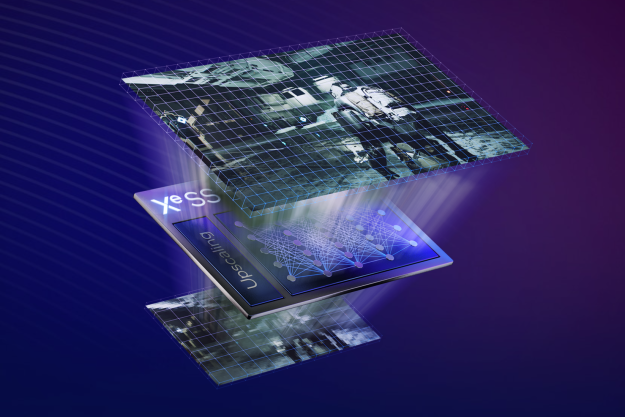Intel’s Innovation 2022 keynote has just ended, headlined by Intel CEO Pat Gelsinger. The live event was full of some big announcements, tech demos, and smaller updates to Intel’s new vision for the future of its company — all punctuated by the awkward moments of live tech events I’ve come to miss in the past couple of years.
The event comes just a week after Nvidia’s divisive GTC event, and the same day as the launch of AMD’s Ryzen 7000 chips. PC hardware launch season is definitely here, and these announcements show Intel’s side of the story.
13th-gen Raptor Lake has officially launched
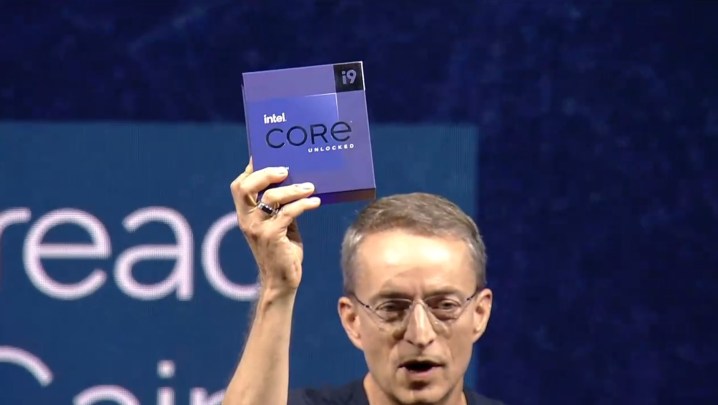
Gelsinger announced the highly anticipated next generation of its consumer CPUs, the 13th-gen Raptor Lake chips. The flagship Core i9-13900K sits at the top of the stack with 24 cores and 32 threads, as well as promises of up to 5.8GHz clock speeds and bigger L2 and L3 cache sizes. Gelsinger says this chip delivers the “best gaming, streaming, and recording experience,” highlighting improvements to both the Performance cores and Efficiency cores of the new hybrid architecture.
The number of Performance cores has changed, and there are six more Efficiency cores that have been added to improve multithreaded performance. In fact, there are double the Efficiency cores across the entire stack, with even the Core i5 model now having eight.
| Core i9-13900K | Core i7-13700K | Core i5-13600K | |
| Cores/Threads | 24 (8+16)/32 | 16(8+8)/24 | 14(6+8)/20 |
| Base clock speed | 3GHz (P-core), 2.2GHz (E-core) | 3.4GHz (P-core), 2.5GHz (E-core) | 3.5GHz (P-core), 2.6GHZ (E-core) |
| Boost clock speed | Up to 5.8GHz | Up to 5.4GHz | Up to 5.1GHz |
| L2 cache | 32MB | 24MB | 20MB |
| L3 cache | 36MB | 30MB | 24MB |
| Max boost power | 253W | 253W | 181W |
| Price | $589 | $409 | $319 |
Gelsinger even hinted that a configuration of these chips will come out in 2023 that can hit 6GHz. Even the mobile versions of these chips got a shoutout, and they are likely to get announced at CES 2023 in January.
All of these claims, of course, are just claims, even if the specs do impress on paper. With Ryzen 7000 out in the world and beloved by reviewers so far, the rivalry between these two companies has never been hotter, despite the fact that Intel didn’t so much as mention its competitor in the keynote. Instead, Gelsinger seems squarely focused on marching to the beat of a new song: “Moore’s Law is alive and well,” as he stated from the stage. 13th-gen Raptor Lake is just one more step in that forward motion, we’ll have to see just how much of an improvement these chips really deliver once we’ve tested them ourselves.
Samsung slidable display

In a surprise guest appearance, the head of Samsung Display came on stage to show off an exciting new innovation in display technology: the slidable screen. We didn’t get many details, but the smooth glide of the screen was pretty impressive. It offers a lot of the same benefits of a foldable screen, but in a much more intuitive package for a device of this size. The slidable screen effectively turns a 13-inch screen into a 17-inch one, and even if this technology is still early, it’s exciting to see nonetheless.
Foldable screens on phones have finally reached maturity with Samsung’s latest offerings, and in 2022, we’re finally seeing some of that innovation come to mobile PC products, such as the Zenbook 17 Fold. There’s a history of Intel showing off futuristic PC concepts.
It was at an Intel event where the first foldable 17-inch OLED panel was demoed, and now this slidable display furthers the trend. It’s a good sign for Intel’s partnerships with these companies that are pushing the boundaries of futuristic display technology.
Arc A770 gets price and release date
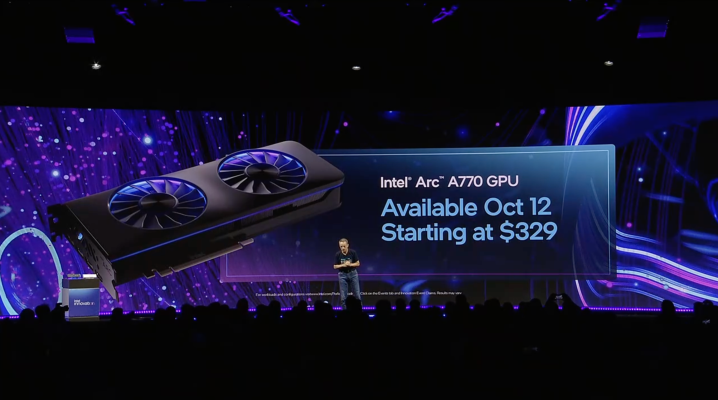
After mentioning that graphics has always been a passion of Gelsinger, the CEO announced some availability details on its first gaming GPU, the Arc A770. It’ll be available starting on October 12 for $329. The CEO didn’t call out Nvidia by name, but Gelsinger preceeded the announcement by mentioning the rising cost of consumer GPUs in recent years.
It’s great messaging for what has been a troublesome launch so far for Intel’s first gaming card. With delay after delay, there have been concerns that the GPU will still live up to the performance it was initially supposed to hit. But with Nvidia’s attention focused on wildly expensive graphics cards that most people can’t buy, Intel may have found a way to slide in with a lower-priced GPU at the right time.
Gelsinger mentioned that the units are already out to reviewers, so it’ll only be a matter of time before we get to see what these cards can really do.
Some love was also given to a new data center graphics card, the Data Center GPU Flex, as well as the high-performance computing (HPC) GPU, Ponte Vecchio.
Intel Unison integrates phones and PCs
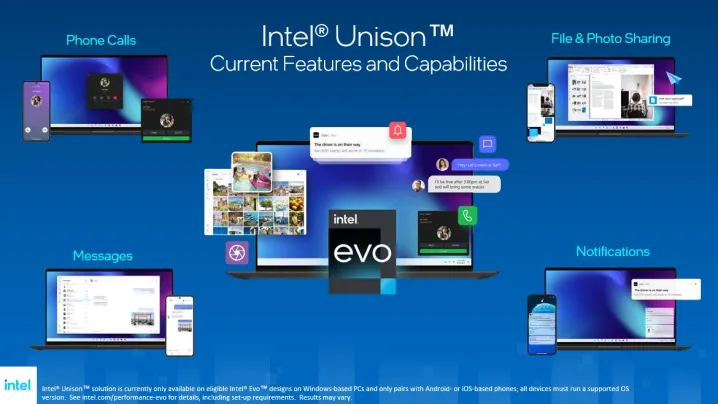
There have been many attempts to better integrate smartphones and PCs over the years, but none that have been able to duplicate what Apple has in its own ecosystem. Intel Unison, though, is promising. It’s completely platform-agnostic, meaning both Android and iOS are fully supported, which has been a hangup of attempts to resolve or unify devices from Microsoft or device manufacturers in the past.
Intel didn’t get into all the details, but Unison will give your PC access to phone calls, photos, notifications, and messages from your mobile device. Unfortunately, as of now, it’ll only be supported on new eligible Intel Evo devices. That means laptops only, and not on older devices. That also counts out many form factors, including gaming laptops and high-performance machines. These must be fully updated Windows 11 PCs, of course, and so far, Intel only mentioned Acer, Asus, and Lenovo as partners. Intel says there are more to come, but we’ll have to wait and see just how widespread adoption is from future laptops.
Linus Torvalds wins Innovation award
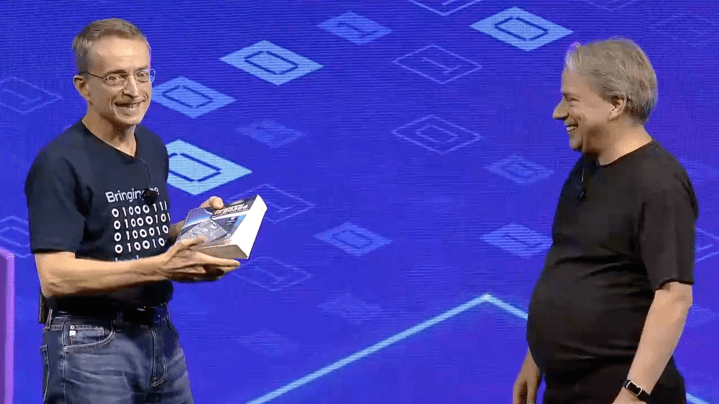
To close out the event, Gelsinger brought Linus Torvalds out on stage. He asked Torvalds about his beginnings in his storied software engineering career, with Gelsinger emphasizing Intel’s commitment to open-source ecosystems and platforms. Torvalds was then presented with the first Intel Innovation award for his lifetime of achievement in the industry.
Torvalds doesn’t make many public appearances, commenting that he himself isn’t much of a people person, making his presence at the event particularly noteworthy.
Editors' Recommendations
- It just became the perfect time to buy a last-gen Intel CPU
- Intel CPU gaming crashes are causing an uproar
- Some surprising details on Intel’s upcoming 14th-gen laptops just leaked
- Intel’s 14th-gen Raptor Lake refresh might be a major disappointment
- ASRock may have released a major leak about Intel Raptor Lake


